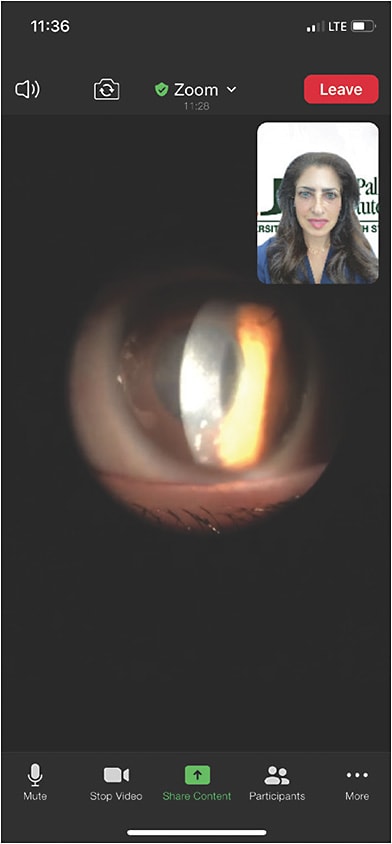A new age in eye care has emerged from the COVID-19 pandemic, introducing a paradigm shift in the practice of ophthalmology and the delivery of ophthalmic care to accommodate for telemedicine. Immediately in response to the pandemic, telemedicine provided a way to decrease the possibility for transmitting the disease and to continue to serve patients. As the pandemic continues, telemedicine provides practice benefits, for example by allowing patients' loved ones to be included despite facility restrictions on visitors. The offering also increases patient satisfaction. In a Press Ganey Special Report, surveys indicate patients are more likely to recommend a provider who offers virtual consults over those who do not.
In implementing telemedicine into practice, we have found that tele-triage has allowed us to manage sight-threatening conditions more effectively, while addressing low-acuity conditions remotely. Other types of telemedicine visits, such as follow-ups, virtual counseling, and second opinion consults, can easily be adapted within the workflow of office staff. Here, we review telemedicine options and the role allied health professionals play in each.

Tele-triage
At the time of scheduling, respective staff members provide patients with verbal and electronic instructions for ease of future connectivity. Virtual appointments are then confirmed 24-48 hours in advance, where any technical concerns may be addressed.
At the time of the visit, technicians connect through the integrated video platform and conduct a virtual work-up, including chief complaint, past medical history, medications, and allergies. Once the workup is complete, the technician notifies the physician and scribe for review and connection to the video call. In instances where video calls are not possible, the consultation may be achieved via telephone. When further testing or a procedure is required, the patient can be scheduled for an expedited, in-person visit.
Advances in remote technologies
The following technologies are aiding in the paradigm shift to telemedicine.
Video-slit lamp examinations allow for live remote evaluation. Implementation technology includes a smartphone or tablet and a slit lamp attachment, both of which are readily available and connect to any ocular. In this examination, physicians are connected virtually to on-site technicians and patients, where doctors observe the slit lamp exam in real-time.
In-home monitoring devices, such as IOP monitoring devices, continuously provide real-time data to ophthalmic care teams. In using these devices, patients exhibit greater control of their eye care. In this use of remote technology, ophthalmic professionals can monitor and, when needed, secure a remote follow-up visit for further discussion and education, as it relates to the data's findings, with patients.
Hybrid visits
Hybrid models of visits are highly efficient when in-person testing is necessary. These visits consist of a focused technician work-up and diagnostic testing followed by communication from the physician. These visits allow patients to be seen at the locations and times that are most convenient for them, independent of the physician’s whereabouts. At Bascom Palmer Eye Institute, we offer after-hours and Saturday hybrid clinics to accommodate patients and add flexibility.
Second opinion virtual consults
Increased use of and access to telemedicine has paved a new avenue for second opinion consults, in which a patient’s external records are reviewed and a telehealth video visit is conducted. In many cases, the home physician joins the visit to collaborate with the consulting physician and the patient. With this ability, coordination of care is improved and patients are able to minimize physical encounters with multiple specialists while receiving tertiary-level care.
When a second opinion request is received, our staff members collect the external records from the patient. An initial review of the records is performed, and the patient is assigned to the corresponding specialist for consultation. At the time of visit, the technician ensures successful video connection between all parties and initiates the history-taking process. Once complete, the technician notifies the consulting physician and scribe, who then perform the consultation and complete the visit.
A new age for the ophthalmic professional
The pandemic has ushered in a new age in health care for the ophthalmic professional. Although initially designed as a way to minimize patient, staff, and physician exposure, telemedicine may emerge as a great way to care for our patients moving forward. OP








